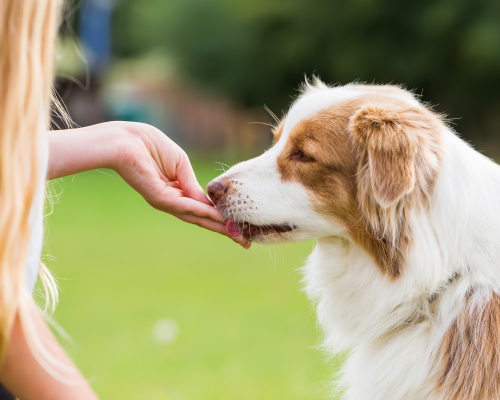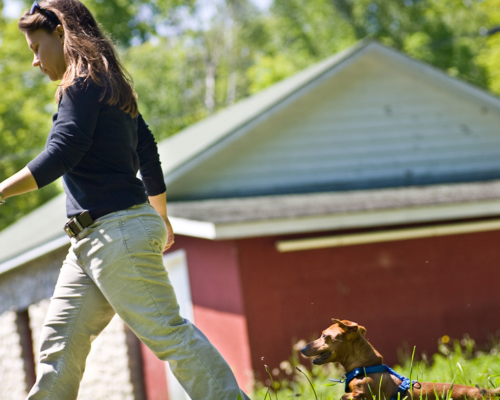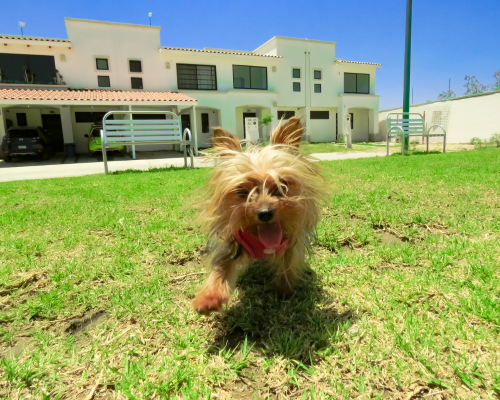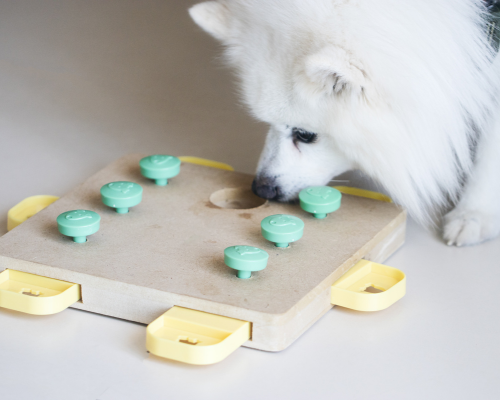20 Signs Your Dog is Hungry and How to Respond
20 Signs Your Dog is Hungry and How to Respond

Vet Reviewed

By: Sarah Hodgson
January 1, 1970
- Posted in Dogs
Table of Contents
One of the most important messages for us dog owners to understand is when our dog is trying to tell us that they're hungry.
Dogs have a unique way of letting us know when they need something, especially food. In this article, we'll explore 20 signs that your dog is hungry and go over the ways you should respond.
So let's dive in!
Why Should You Pay Attention to Your Dog's Hunger Signs?
Firstly, let's understand why it's so important to pay attention to a hungry dog.
Paying attention to your dog's hunger signs is super important for their well-being. Understanding these cues allows you to meet their nutritional needs and maintain their health. Ignoring these hunger signs may lead to overfeeding or underfeeding, which can impact your dog's weight and overall health. Just like us humans if we don't eat correctly we face health problems. The same goes for dogs.
Moreover, responding to their hunger appropriately can help prevent behavioral issues like begging and food aggression.

The 20 Signs Your Dog Is Hungry
1. Constant Whining
When your dog is hungry, they may resort to whining persistently. This sound is distinct from their regular barks or howls and may come across as more urgent or distressed. If your dog is whining excessively, it's a good idea to check their food bowl and feeding schedule to ensure they're not due for a meal. Ignoring these cries can lead to increased stress and anxiety in your dog.
2. Licking Lips
Another subtle sign that your dog might be hungry is excessive lip licking. While dogs often lick their lips after eating or drinking, persistent lip licking when there's no food around could be a sign of hunger. Be sure to monitor your dog's behavior carefully and write down whether the lip licking is accompanied by other signs of hunger to be certain its food related.
3. Excessive Drooling

While some breeds naturally drool more than others, excessive drooling can be an indicator that your dog is hungry. It’s their body's natural response as they anticipate a meal. If your dog drools more than usual and it's close to their mealtime, they're likely letting you know they're ready to eat.
4. Restless Behavior
Restless behavior can be another telltale sign of hunger in dogs. If they're pacing, unable to settle, or showing other signs of restlessness, it might be because their stomachs are empty. Always make sure to provide them with regular meals and adequate nutrition, as hunger can cause unnecessary stress for your pet.
5. Begging at Mealtime
Begging at mealtime is a classic sign that your dog is hungry. They might sit by your side as you eat, displaying their best behavior in hopes of getting a bite. While it's important not to encourage begging by sharing your food, you should make sure that your dog has been fed adequately before you sit down to eat.
6. Pleading Puppy Eyes

Dogs are incredibly expressive animals, and their eyes can tell us a lot about what they're feeling. If your dog is giving you puppy eyes, they might be trying to tell you that they're hungry. Remember to pay attention to this non-verbal cue, but also be aware that puppy eyes can be used to express other needs or wants as well.
7. Empty Food Bowl Obsession
If your dog is obsessing over their empty food bowl, nudging it around or licking it clean, they could be trying to tell you they're still hungry. Make sure you're feeding your dog the appropriate amount of food for their size, breed, and activity level to keep them satisfied.
8. Begging at Mealtime
If your dog is repeatedly begging at mealtime, this is a strong indicator that they are hungry. They might sit by the dinner table, giving you pleading looks or even paw at you. However, it's important to establish boundaries and ensure your dog understands that begging will not result in extra food.
9. Chewing Inappropriately
When dogs are hungry, they may start chewing on non-food items like toys, furniture, or even your shoes. This is their way of coping with the uncomfortable feeling of hunger. If you notice your dog chewing inappropriately, it might be time to reassess their feeding schedule and diet.
10. Pawing at Food Containers

If your dog starts pawing at their food containers between meal times, this could be a sign that they're hungry. This behavior is their way of showing you they want more food. Again, it's important to make sure your dog is receiving the right amount of food and not overfeeding them.
11. Stalking During Meals
If your dog starts stalking you during your meals, they may be trying to tell you they're hungry. They might sit by your side, watching your every move with interest. While it's important not to encourage this behavior, you should check their food bowl and make sure they've had their meal.
12. Weight Loss or Inadequate Nutrition
Weight loss or inadequate nutrition can be a serious sign of hunger in dogs. If your dog is losing weight or seems malnourished, they may not be getting enough food. It's important to consult with a vet to ensure your dog's diet is appropriate for their size, age, and activity level.
13. Increased Sniffing
Dogs have an extraordinary sense of smell, and when they're hungry, they may start sniffing around more often in search of food. If you notice this behavior, it might be a sign that your dog's stomach is empty and they are ready for their next meal.
14. Stealing Food

Stealing food is another clear sign that your dog is hungry. If they start sneaking food off the counter or from the trash, it's time to reassess their feeding schedule. Remember, it's important to keep human food out of reach as some can be harmful to dogs.
15. Vocalizing for Food
If your dog starts barking, whining or making other vocalizations around mealtime, they're probably telling you they're hungry. While it's important to maintain a steady feeding schedule, these vocalizations can serve as a reminder that it's time for your dog's meal.
16. Tail Wagging at Meals
Dogs wag their tails to express a variety of emotions, and excitement about food is definitely one of them. If your dog's tail starts wagging at the sight of their food bowl or during meal preparations, they're most likely hungry and excited to eat.
17. Persistent Followings

If your dog starts following you around more than usual, and especially into the kitchen, they could be trying to tell you they're hungry. Pay attention to this behavior and make sure you're feeding your dog regularly.
18. Scratching Around Food
Dogs may scratch around their food area when they're hungry. This behavior can be a sign that they're trying to find more food. Be sure to keep their feeding area clean and provide them with enough food to satisfy their hunger.
19. Stomach Rumbling
Just like in humans, a dog's stomach might rumble when they're hungry. If you hear your dog's stomach making noises and it's close to mealtime, they're probably ready to eat.
20. Food-Related Aggression

Last on the list is aggression. This can manifest as growling, snapping, or even biting when food is present. This is often a sign that your dog is not getting enough to eat and is resorting to aggressive behavior to protect their food.
Note
After going through these 20 hunger signs dogs tend to make, you should now have a better understanding of whether your dog is hungry. Make a note of these signs, and if you notice several of them, it should be clear that your dog is hungry.
How To Respond To A Dog That's Hungry?
If you suspect that your dog is hungry and you've observed these signs, it's important to take action to maintain their health. Here are eight ways to respond to address their hunger and ensure their overall happiness:
1. Responding to Whining and Begging
If your dog is whining or begging for food, it's a clear sign they're hungry. However, giving in to their pleas can lead to overeating and obesity. Instead, try to set a regular feeding schedule and stick to it, even if your dog begs for food in between meals.
2. Setting Healthy Feeding Routines

Establishing a regular feeding schedule is one of the most effective ways to manage your dog's hunger. This not only ensures they get the nutrients they need, but also helps prevent overeating and obesity.
3. Choosing the Right Dog Food
Not all dog foods are created equal. Some are high in fillers and low in nutrients, which can leave your dog feeling hungry even after eating. To ensure your dog gets the nutrition they need, choose a high-quality dog food that is high in protein and low in fillers.
4. Portion Control and Overfeeding Prevention
Even with a high-quality dog food, it's possible to overfeed your dog. Portion control is essential to prevent obesity and other health problems. Use a measuring cup to ensure your dog gets the right amount of food at each meal.
5. Treats and Snacks: A Balanced Approach
Treats and snacks can be a great way to reward your dog, but they should not make up a large part of their diet. Too many treats can lead to weight gain and other health problems.
6. Engaging Your Dog with Food Puzzle Toys

Food puzzle toys can be a great way to slow down your dog's eating and make mealtime more engaging. These toys require your dog to work for their food, which can help prevent overeating and keep them entertained.
7. Seeking Vet Help
If your dog is constantly hungry, it may be a sign of a medical problem. If you've tried adjusting their diet and they're still always hungry, it's time to seek help from a veterinarian.
8. Training for Healthy Eating Habits
Training your dog to eat slowly and calmly can help prevent overeating and reduce the risk of food-related aggression. This can be done through positive reinforcement and patience.
The Bottom Line
So there you have it, knowing these signs of hunger in your dog is important for their overall health. Always make sure to provide them with regular meals and pay attention to any changes in their behavior. If you're unsure about your dog's nutritional needs, consult with a vet. Remember, a well-fed dog is a happy dog!

Subscribe to Petfluence!
Get updates on the latest posts and more from Petfluence straight to your inbox.